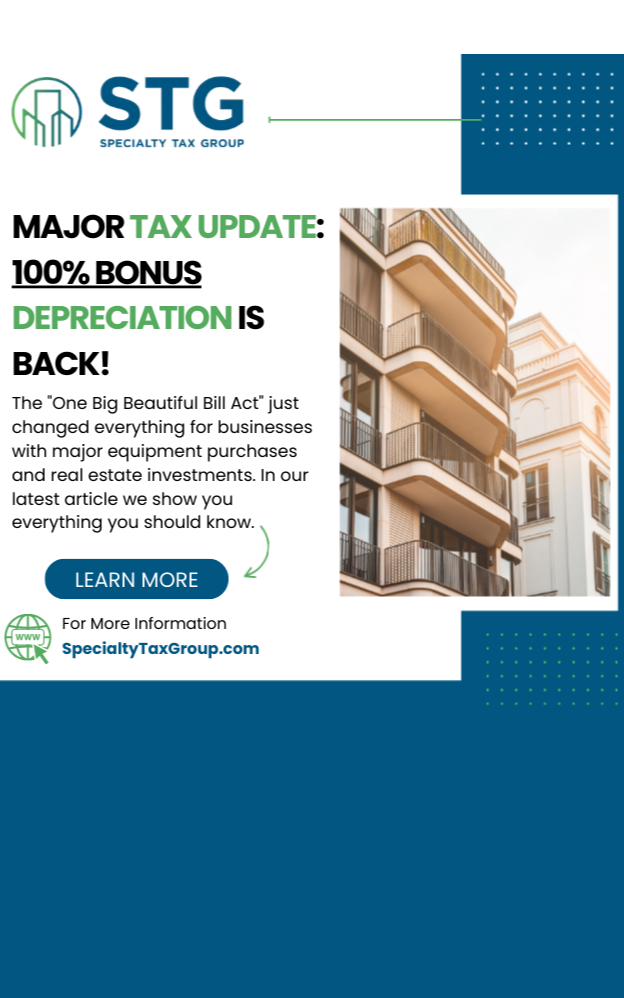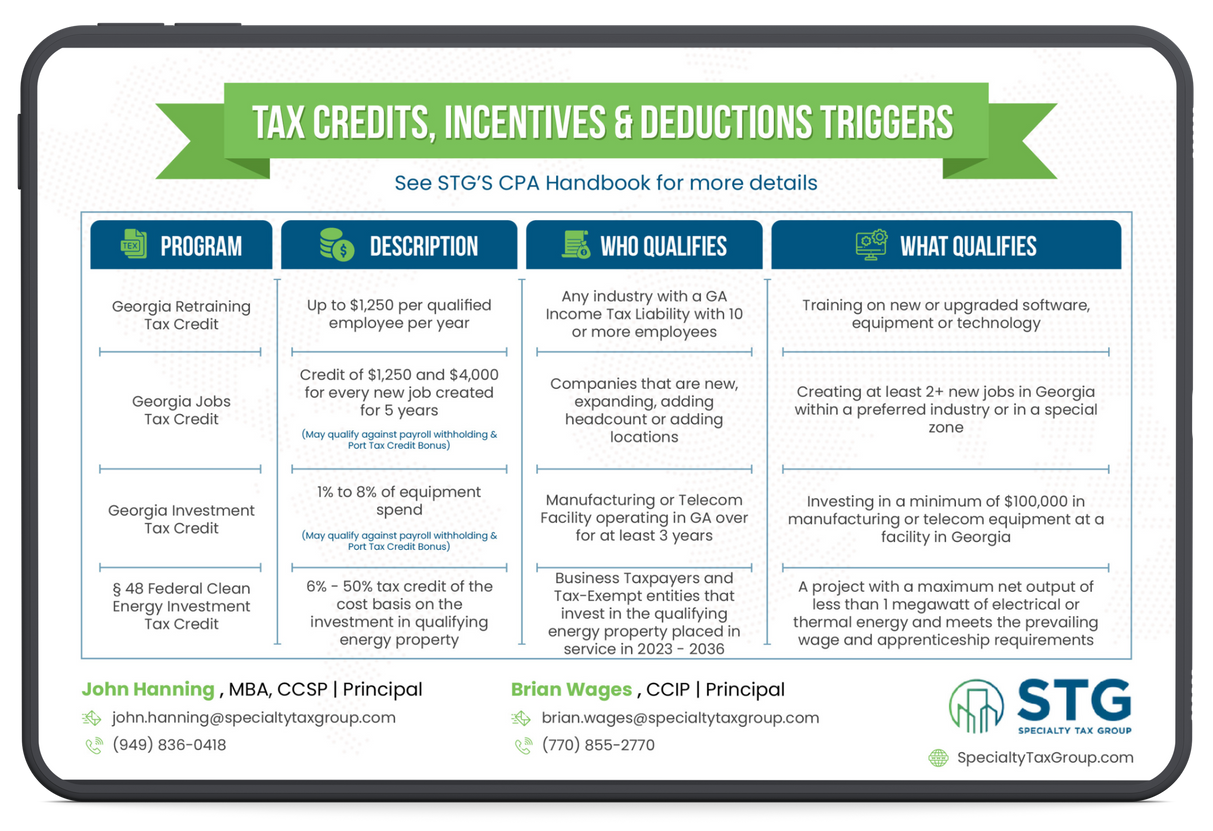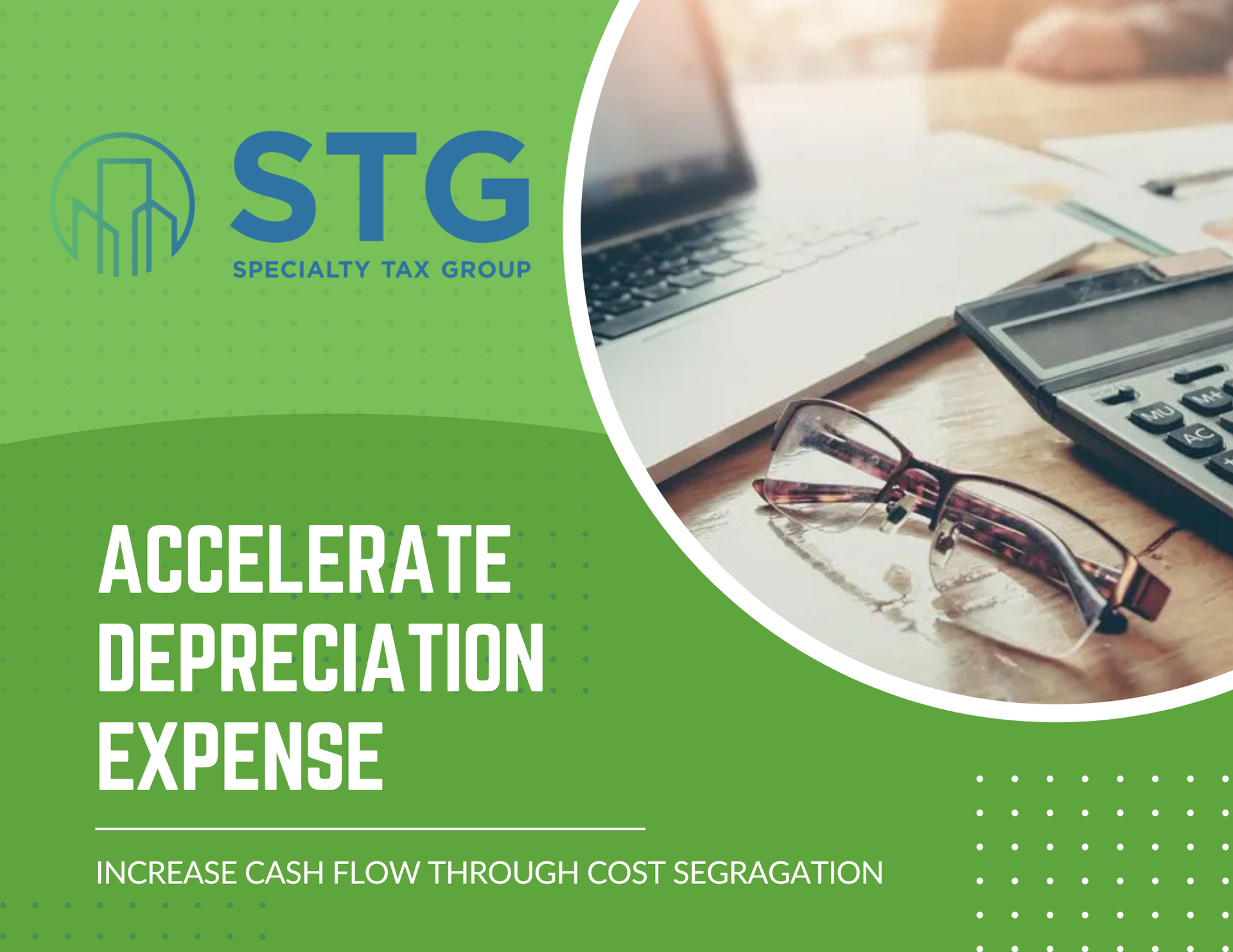This blog post has been researched, edited, and approved by John Hanning and Brian Wages. Join our newsletter below.
Georgia Investment Tax Credit

The state of Georgia started an investment tax credit. This credit helps local businesses grow by making improvements more affordable. Georgia companies can get 1% to 8% money back on qualified investments over $50,000. To qualify, manufacturers and telecoms must be in Georgia for 3+ years.
Businesses should compare this credit to the Jobs Tax Credit. They can only use one. Both credits aim to help companies expand and add jobs. But the rules differ. Checking both helps companies pick the better option.
Who Qualifies for the Georgia Investment Tax Credit
This credit is available to new and existing facilities that purchase qualified investment properties, equipment, machinery, and general improvements made. The investments made need to total at least $50,000 in new or existing manufacturing or telecommunications facilities.
Two factors help determine the amount of the investment tax credit a company can use in any given tax year. It’s determined by geographic location and the type of investment. The more economically distressed counties have a higher credit percentage. The counties are ranked and fall in tiers on an annual basis.
The credit also depends on the type of investment. If a company invests in pollution control equipment, recycling equipment, or converts a defense plant manufacturing facility to a new product, they can earn credits of 3% to 8% of their capital outlay1. Any investment in general equipment earns tax credits of 1% to 5%.
How to Use the Georgia Investment Tax Credit
The investment tax credits are used to offset up to 50% of a company’s income tax liability3. If the company’s investment tax credits exceed 50%, the unused credits can be carried forward for up to 10 years and applied to the subsequent year’s tax liability, subject to the Income Tax Credit Carryforward Period Reduction introduced under HB 1181.
Unused credits may also be transferred and continued by any transferee of the taxpayer as long as the transferee meets the original approval criteria.
For operating years after January 1, 2020, a new regulation was created to provide an opportunity for some businesses to be able to use the investment tax property to offset Georgia payroll withholding tax liabilities where before, it was only available to offset income tax. This offset is only available to business operations within rural counties that are ranked tier 1 or tier 2 in Georgia, with a $1 million credit limitation per taxpayer per taxable year3. Mandatory electronic preapproval application is also required for taxpayers in these rural counties seeking to claim any excess investment tax credit not used on the income tax return against the taxpayer's withholding tax liability.
There is the option to utilize the Port Tax Credit Bonus, which can increase the investment tax credit to the equivalent of a tier 1 location, regardless of the tier level currently assigned at the facility. For businesses to qualify for this bonus, base port traffic must equal at least 10 TEU units and have increased business by 10% over the previous year or base year.
The Georgia Investment Tax Credit is a great opportunity for manufacturers and telecommunication companies to recoup investment costs through tax savings. Recent legislation passed by the Georgia General Assembly, including new income and sales tax laws taking effect in 2023 and beyond, may also impact the credits available.
2024 Tax Guide





